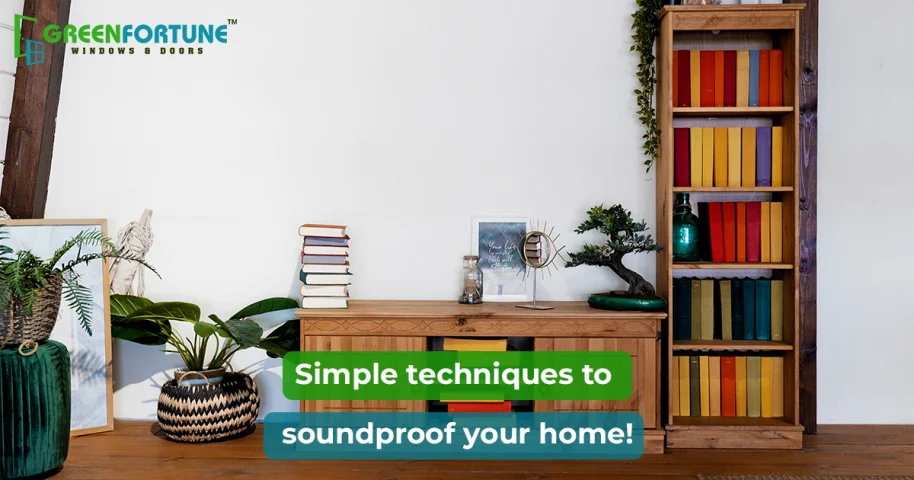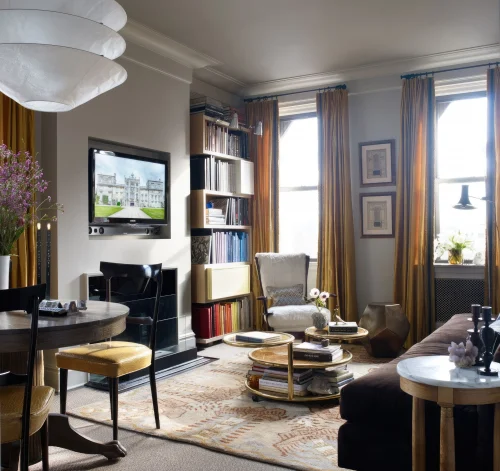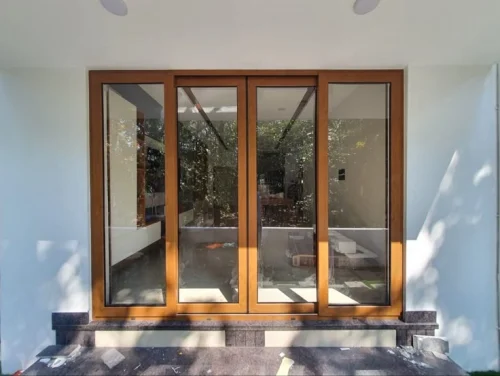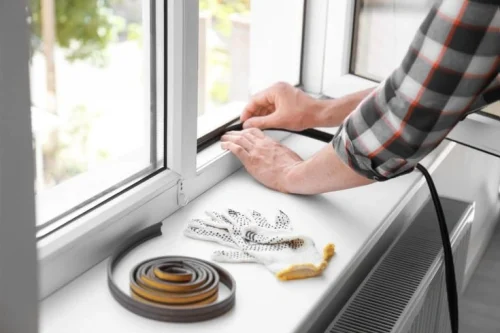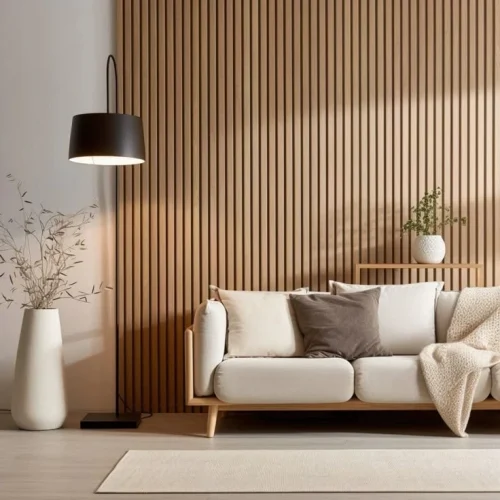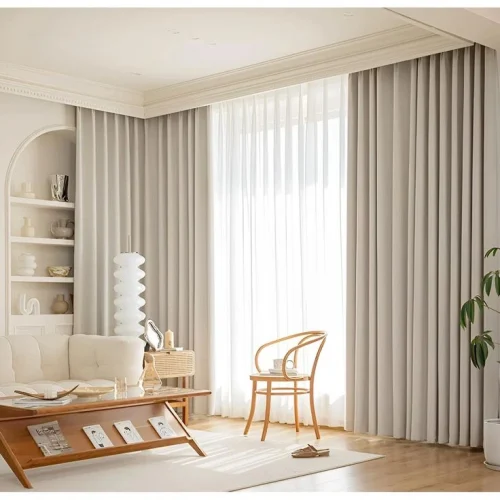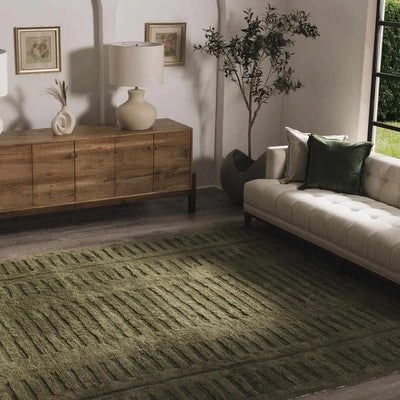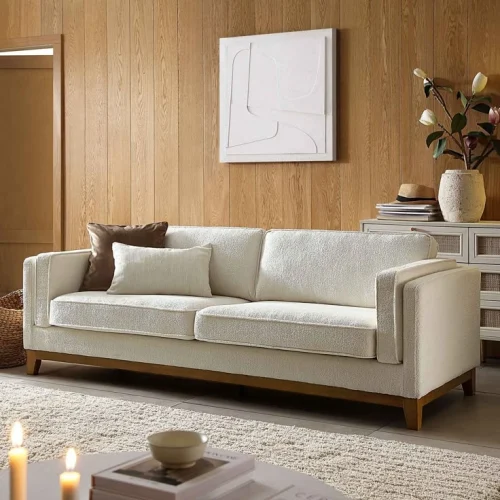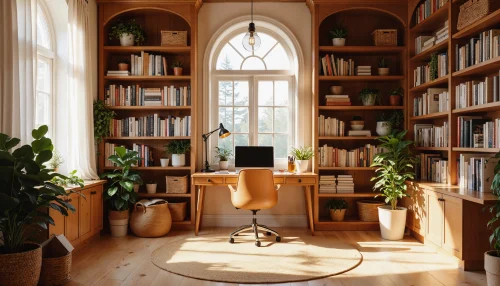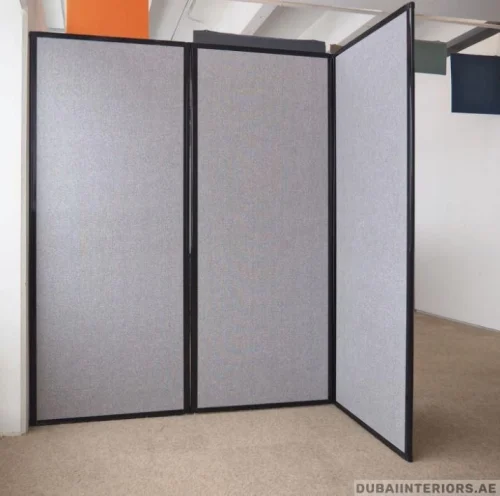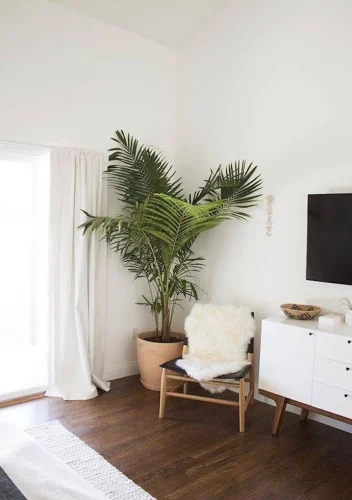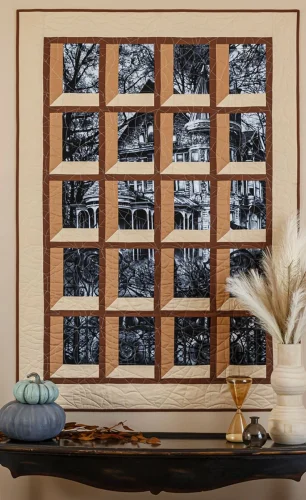
Trendy Wooden Wall Panel Design for a Stylish Makeover
June 2, 2025
10 Curved Sofa Living Room Ideas That Instantly Lift Your Space
June 2, 2025Solutions for soundproofing home interiors without spending much!
You sit on the sofa to relax.
You hear the car honking or someone drilling into a wall. Like adding oil to the fire, your neighbour starts yelling on the phone and a pressure cooker goes off somewhere. You’re on the verge of exploding, and a street dog starts to bark.
You shut the door. Close the window. Pull the curtain. Nothing helps. The noise just finds a way in.
This is what every day feels like in cities now. It’s almost impossible to escape the noise when you work from home, attend an online class, put your baby to sleep or lie down in peace.
And that’s why soundproofing home interiors is no longer a luxury and has become a basic need.
Table of contents
- 10 Soundproofing Home Interiors You Should Try
- 1. Install noise reduction windows
- 2. Seal gaps with weather stripping tapes
- 3. Use acoustic wall panels
- 4. Hang heavy or double-layered curtains
- 5. Lay down rugs and carpets
- 6. Add soft furnishings to your space
- 7. Place bookshelves or cabinets along shared walls
- 8. Rearrange your house layout
- 9. Rearrange your house layout
- 10. Try Temporary Pads and Foam for Rental Homes
- Final Takeaway
- FAQs
10 Soundproofing Home Interiors You Should Try
Here are 10 simple techniques to block the noise and root for a quieter, calmer home.
1. Install noise reduction windows
When it comes to soundproofing home interiors, start with the windows. Most of the outside noise comes only through them.
You can block those external noises completely by installing noise reduction windows, especially double or triple-glazed uPVC ones. So, no more silent suffering from annoying traffic, street noise or construction sounds.
Also read: How to soundproof your existing windows?
If you're looking for the best noise reduction windows in India, GreenFortune makes uPVC windows and doors that are designed to reduce noise, keep out dust, and handle all kinds of weather. They're strong, easy to maintain, and perfect for everyday homes.
2. Seal gaps with weather stripping tapes
If you observe closely, your room door may have a small opening at the bottom. Even minor gaps around your doors or windows can let in an unbelievable amount of sound.
By using weather sealing tapes, door draft stopper, rubber door sweeps or foam strips, you can close those gaps. These materials are affordable, very effective, and suitable for rental homes, where you cannot make major alterations.
3. Use acoustic wall panels
If your room’s walls are hollow, the sound may bounce around and echo too much.
In this case, you can use acoustic wall panels. They are soft, padded panels that absorb sound. You can simply stick them directly on your walls. There’s no need to cover the whole room also; you can target areas near your desk, bed or TV.
You can use them in your home offices, bedrooms or living rooms with high ceilings.
4. Hang heavy or double-layered curtains
If you are thinking that curtains are only for blocking sunlight, you might be mistaken. They can block noise, too.
By using thick curtains of floor-length designs, preferably layered ones like blackout curtains, you can reduce the outside noise coming through windows or even thin walls.
5. Lay down rugs and carpets
If you don’t know, bare floors reflect sounds. That’s the reason why rooms with tiles or marble flooring echo a lot.
By laying a thick carpet or rug under your bed, in the living room, or the hallways, the soft flooring can reduce the noise bouncing around the house.
6. Add soft furnishings to your space
For effective soundproofing home interiors, make sure to fill the room with soft materials.
Go for fabric sofas, cushions, pouffes, fabric wall hangings, tapestries, and bean bags. All these absorb sound waves, and there will be less echo in the room.
Also read: Benefits of soundproof glass for your doors and windows
7. Place bookshelves or cabinets along shared walls
If you live in apartments, the walls are the common noise source. Your loud neighbour will test your patience.
To avoid that, you can place bookshelves, wardrobes, or cabinets against the walls. They act like a physical sound barrier and reduce the noise from coming inside. If you add foam padding behind them, it’s even more effective.
8. Rearrange your house layout
If you live in a rental house, just shifting things around can help. This is one of the best urban home noise control hacks.
You can move your bed or study area away from the windows or use room dividers to create quieter zones. Make sure to keep the glass decor and echo-prone items out of open spaces.
9. Rearrange your house layout
Indoor plants are not just for pretty decor, they also help reduce noise.
Naturally, the large, leafy plants absorb sounds and reduce echo when kept in corners or near windows. If you are wondering which indoor plant to buy, consider the areca palm, snake plant, peace lily, and rubber plant.
10. Try Temporary Pads and Foam for Rental Homes
If you live in rental homes, you might have certain rules to follow, like no drilling or renovating. So, to reduce the noise, use
- Foam panels behind beds or shelves
- Quilted window pads that hang like curtains
- Removable acoustic curtains
- Stick-on door and window sealers
These are easy to install and remove.
Final Takeaway
Urban noise is not just irritating; it also leads to poor sleep, anxiety and other major issues in the long run. We toil hard in our lives, and we deserve better. If you are hesitating that soundproofing home interiors will be expensive, it’s not. With our 10 simple techniques, you can stop the noise coming inside on budget.
Also read: uPVC soundproof windows
FAQs
1) Why do flats feel noisier than independent houses?
Flats share walls, ceilings, and corridors with others, so sound travels easily. In independent houses, there’s more distance between rooms and less chance of outside noise entering.
2) Do false ceilings really help reduce noise?
Yes, false ceilings create a gap between floors. This space helps reduce sounds like footsteps or heavy furniture from above, especially when used with soft materials like mineral wool or foam.
3) Can I make a room soundproof without spending too much?
Yes, try simple fixes like sealing gaps, using thick curtains, adding rugs, soft cushions, and rearranging furniture. These steps reduce echo and block outside noise without costing much.







